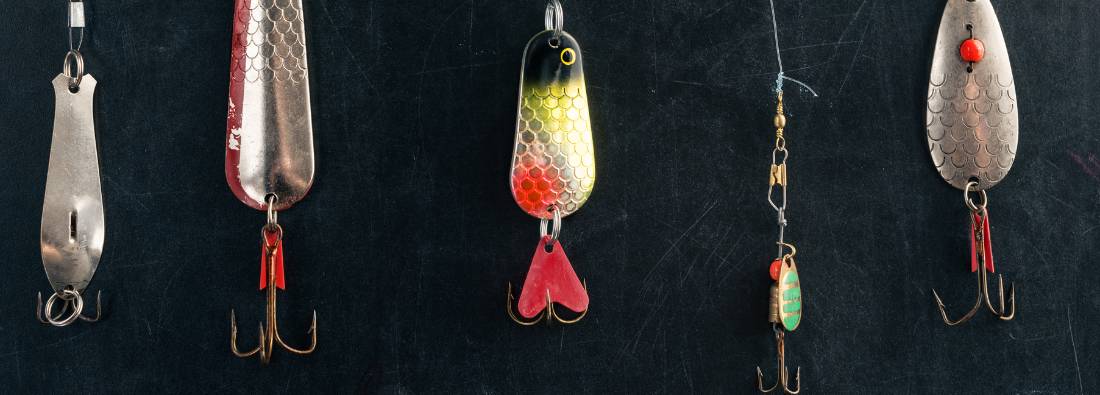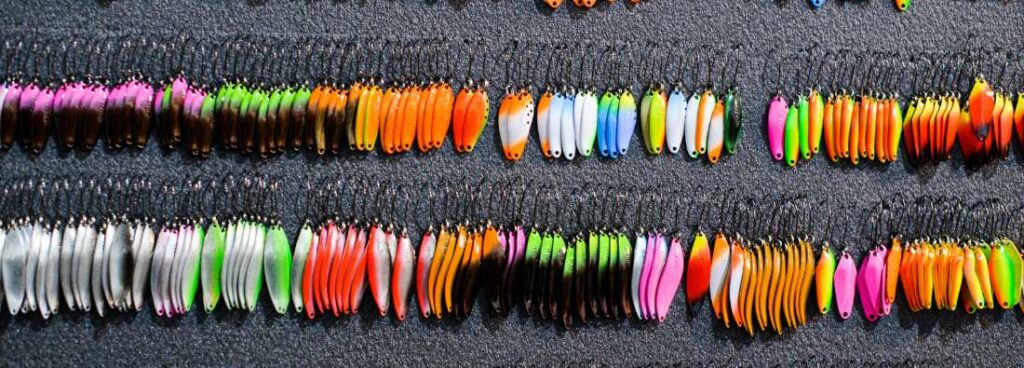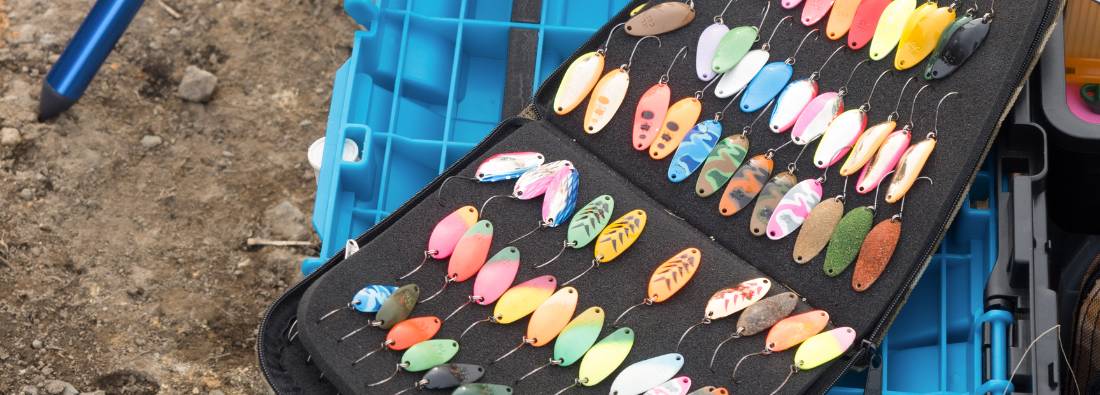Stories Worth Reeling In...
Last Updated on September 22, 2023
As a seasoned saltwater angler, I understand the constant search for that one lure that can increase your chances of a successful catch.
Should you use spoon lures for saltwater fishing, you ask? Absolutely, and let me tell you why. Having spent countless hours on the water, experimenting with different lures, the spoon lure has consistently proven its worth in my fishing arsenal.
The following article will share my firsthand experiences and insights on why spoon lures can significantly boost your success in saltwater fishing.
Table of Contents
Before we dive into the benefits of using spoon lures, let’s take a closer look at what they are. Spoon lures are a type of fishing lure characterized by their concave, spoon-like shape.
Made from a variety of materials, including metal and plastic, spoon lures are designed to mimic the appearance and movement of baitfish. Their unique shape and design enable them to create a captivating swimming action that entices saltwater gamefish.

One of the key advantages of spoon lures is their versatility. Whether you’re fishing inshore or offshore, in calm waters or choppy seas, spoon lures can adapt to different conditions.
From casting and retrieving to jigging and trolling, these lures excel in various fishing techniques, making them suitable for targeting a wide range of saltwater species.
Spoon lures are renowned for their enticing swimming action. As they are retrieved through the water, they wobble and flash, mimicking the movements of injured or fleeing baitfish.
This action triggers the predatory instincts of saltwater gamefish, enticing them to strike. The erratic movement and flash of spoon lures make them irresistible to species like snook, redfish, and tarpon.
Another advantage of spoon lures is the visual and auditory stimuli they provide. The concave shape of the lure catches and reflects light, creating flashes that mimic the scales of baitfish.
Additionally, as spoon lures move through the water, they produce vibrations that can attract fish from a distance. These combined factors make spoon lures highly effective in murky or low-light conditions, where fish rely on their senses to locate prey.
Spoon lures are designed with aerodynamics in mind, allowing anglers to achieve impressive casting distances. Whether you’re casting from the shore or a boat, spoon lures enable you to cover more water and reach areas where fish might be lurking.
This extended casting range increases your chances of finding feeding fish, especially when targeting saltwater species that tend to roam over large areas.
Saltwater fishing can be harsh on lures, but spoon lures are known for their durability. Constructed with robust materials and often featuring corrosion-resistant finishes, these lures can withstand the rigors of saltwater environments.
This durability ensures that your spoon lures will remain in good condition, even after repeated encounters with toothy predators and abrasive saltwater.

Now that we’ve explored the advantages of spoon lures, let’s discuss how to choose the right one for your saltwater fishing endeavors. Several factors should be considered when selecting a spoon lure to maximize its effectiveness.
The size and weight of a spoon lure play a crucial role in its performance. It’s essential to match the size of the spoon lure to the target fish species and the prevailing fishing conditions.
In general, larger spoon lures are effective for targeting larger saltwater gamefish, while smaller sizes are suitable for species like seatrout and snapper. Additionally, consider the weight of the spoon lure, as it affects casting distance and the lure’s action in the water.
Heavier spoon lures are better suited for casting against strong winds or when you need to reach greater depths, while lighter ones are ideal for more delicate presentations or when fish are feeding near the surface.
The color and finish of a spoon lure can greatly impact its effectiveness. Consider the water conditions and the prevalent forage species when choosing the color of your lure. Bright, flashy colors like silver, gold, and chartreuse are popular choices as they mimic the appearance of baitfish.
Additionally, some spoon lures feature attractive finishes like holographic or UV coatings, which can enhance their visibility and appeal to saltwater gamefish.
Another crucial aspect to consider when selecting a spoon lure is the quality of its hooks. Ensure that the hooks are strong, sharp, and corrosion-resistant. This is particularly important when targeting saltwater species known for their powerful strikes and toothy mouths.
Upgrading the hooks on your spoon lures, if necessary, will help prevent hook failures and increase your chances of landing that prized catch.
Here are a few instances when using a spoon lure can be particularly advantageous:
Active Feeding Times: Spoon lures work well when fish are actively feeding near the surface or in mid-water columns. The enticing action and flash of a spoon lure can trigger predatory instincts, enticing fish to strike.
Low Light Conditions: Spoon lures are known for their ability to attract fish in low light conditions, such as early mornings, late evenings, or cloudy days. The flash and vibration created by the spoon’s design can be highly effective when visibility is limited.

Now that you have selected the right spoon lure, it’s time to explore the various techniques for using them effectively in saltwater fishing. Here are some tried-and-true methods that can help you maximize your success:
Casting and retrieving is a versatile technique that works well with spoon lures. Start by making a long cast to cover a wide area, and then retrieve the lure at a moderate speed. Vary your retrieval speed, occasionally pausing or imparting erratic movements to mimic injured baitfish.
This technique is effective for enticing fish that are actively feeding or cruising near the surface.
Jigging with spoon lures involves imparting an up-and-down motion to imitate wounded baitfish.
Drop the spoon lure to the desired depth, and then jerk the rod tip upward, causing the lure to flutter and flash. Allow the lure to fall back down, repeating the motion. This technique is particularly effective when targeting bottom-dwelling species like grouper and snapper.
Trolling with spoon lures is an excellent method for covering large areas and searching for actively feeding fish. Attach a spoon lure to a trolling rig or use a planer to achieve the desired depth.
Maintain a steady trolling speed, and let the spoon lure swim through the water, creating its enticing action. This technique is popular for targeting species like king mackerel and mahi-mahi.
Spoon lures have proven successful in enticing a wide range of saltwater gamefish. Here are some popular species that are known to be attracted to spoon lures:
Remember, the effectiveness of spoon lures can vary depending on the location, time of year, and specific conditions, so it’s always a good idea to research and adapt your approach accordingly.

To enhance your success when using spoon lures in saltwater fishing, consider the following tips:
By incorporating these tips into your fishing strategy, you’ll be well-equipped to maximize the potential of spoon lures and increase your catch rate.
Over the years, I’ve come to realize that in saltwater fishing, the secret weapon is often a well-selected and expertly handled spoon lure.
The versatility, enticing action, and durability of these lures make them stand out, helping me land a diverse range of saltwater species.
Through trial and error, adjusting techniques with the changing seasons, and continuously adapting to the behavior of the targeted fish, I’ve honed my spoon lure fishing skills.
Next time you pack your tackle box, I strongly recommend including a variety of spoon lures. Practice those casting, jigging, or trolling techniques and let the spoon lure’s irresistible swimming action work its magic on the gamefish.
And remember, always follow local fishing regulations and practice catch-and-release when necessary, ensuring the sustainability of our cherished saltwater ecosystems.